Hyundai i10 vs Suzuki Ignis - Forskelle og priser i sammenligning
Pris og effektivitet er ofte de første kriterier ved bilkøb. Her ser man, hvilken model der bedst kan betale sig på længere sigt – både ved tankning, opladning og indkøb.
Hyundai i10 har en knap mærkbar prisfordel – den starter allerede ved 133100 dkr, mens Suzuki Ignis koster 142700 dkr. Forskellen er omkring 9561 dkr.
Der ses også en forskel i brændstofforbrug: nøjes med og er dermed mere økonomisk end , der bruger . Forskellen er omkring pr. 100 km.
Under motorhjelmen viser det sig, hvilken model der er mest sportslig, og hvem der klarer bedst afsættet.
Når det gælder motorkraft, har Hyundai i10 en minimal fordel – 90 HK mod 83 HK. Det svarer til en forskel på cirka 7 HK hk.
I acceleration fra 0 til 100 km/t er Hyundai i10 noget hurtigere – den klarer sprinten på 11.40 s, mens Suzuki Ignis bruger 12.70 s. Det er cirka 1.30 s hurtigere.
I tophastighed ligger Hyundai i10 næsten umærkelig foran – den når 175 km/h, mens Suzuki Ignis topper ved 165 km/h. Forskellen er cirka 10 km/h.
Der er også forskel på drejningsmomentet: Hyundai i10 trækker mærkbar kraftigere med 172 Nm mod 107 Nm. Forskellen er omkring 65 Nm.
Familievenlig eller hverdagens følgesvend – hvem tilbyder mest plads, fleksibilitet og komfort?
Sæder: tilbyder flere siddepladser – mod .
Hvad angår egenvægt, er Suzuki Ignis minimal lettere – 935 kg mod 996 kg. Forskellen er cirka 61 kg.
Når det kommer til bagagerumsplads, tilbyder Suzuki Ignis let mere – 267 L mod 252 L. Forskellen er omkring 15 L.
I maksimal lastekapacitet klarer Suzuki Ignis sig let bedre – op til 1100 L, cirka 50 L mere end Hyundai i10.
I lasteevne vinder Hyundai i10 knap mærkbar – 423 kg mod 395 kg. Forskellen er omkring 28 kg.
Hvem løber med sejren?
Samlet set fremstår Hyundai i10 som er klart overlegent og sikrer sig dermed titlen som DriveDuel Champion.
Den imponerer med et mere afbalanceret helhedsindtryk og er den mest alsidige i hverdagen.
 @ Hyundai Motor Company
@ Hyundai Motor Company
Hyundai i10
Omkostninger og forbrug
Se detaljeret analyse
Motor og ydeevne
Se detaljeret analyse
Dimensioner og karrosseri
Se detaljeret analyse
Hyundai i10
Hyundai i10 er en kvik og charmerende bybil, der gør trange gader og parkeringspladser til en leg med et overraskende rummeligt interiør. Den leverer praktisk fornuft og pålidelighed uden store armbevægelser, perfekt til købere der vil have noget smart uden at tømme kontoen.
Detaljer @ Hyundai Motor Company
@ Hyundai Motor Company
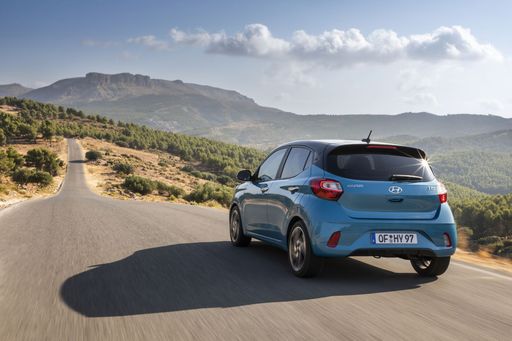 @ Hyundai Motor Company
@ Hyundai Motor Company
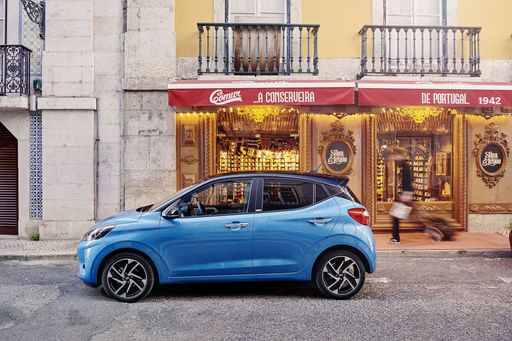 @ Hyundai Motor Company
@ Hyundai Motor Company
 @ Hyundai Motor Company
@ Hyundai Motor Company
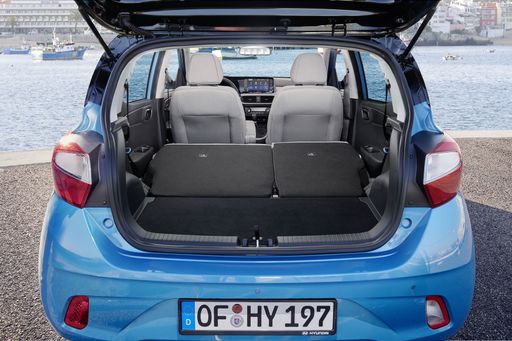 @ Hyundai Motor Company
@ Hyundai Motor Company
Suzuki Ignis
Suzuki Ignis er en charmerende og kvik lille crossover med kantet design, der står ud i mængden uden at gøre krav på plads eller prestige. Den er billig i drift, legesyg at køre i byen og et pragmatisk valg for den, der vil have personlighed uden at sprænge budgettet.
Detaljer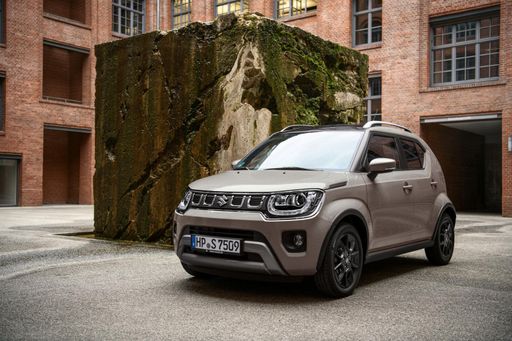 @ Suzuki Motor Corporation
@ Suzuki Motor Corporation
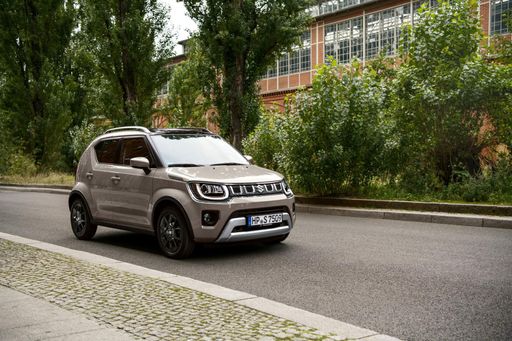 @ Suzuki Motor Corporation
@ Suzuki Motor Corporation
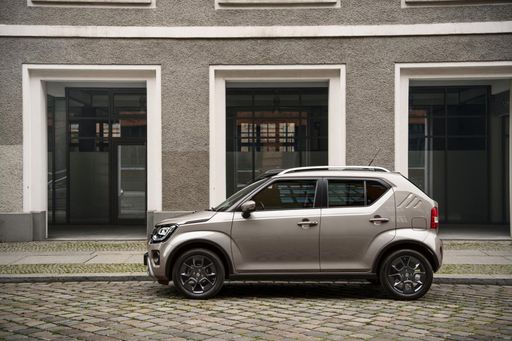 @ Suzuki Motor Corporation
@ Suzuki Motor Corporation
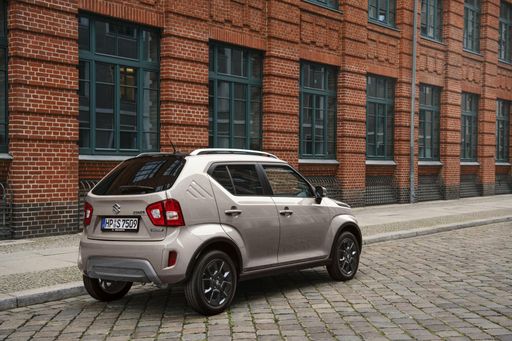 @ Suzuki Motor Corporation
@ Suzuki Motor Corporation
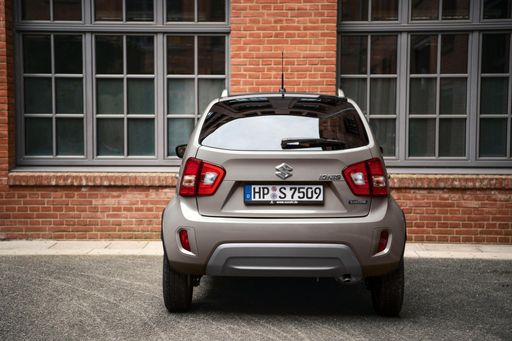 @ Suzuki Motor Corporation
@ Suzuki Motor Corporation
 @ Hyundai Motor Company
@ Hyundai Motor Company
|
 @ Suzuki Motor Corporation
@ Suzuki Motor Corporation
|
|
|
|
Omkostninger og forbrug |
|
|---|---|
|
Pris
133100 - 173900 dkr
|
Pris
142700 - 177900 dkr
|
|
Forbrug L/100km
4.9 - 5.5 L
|
Forbrug L/100km
4.9 - 5.4 L
|
|
Forbrug kWh/100km
-
|
Forbrug kWh/100km
-
|
|
Elektrisk rækkevidde
-
|
Elektrisk rækkevidde
-
|
|
Batterikapacitet
-
|
Batterikapacitet
-
|
|
co2
110 - 124 g/km
|
co2
110 - 122 g/km
|
|
Tankkapacitet
36 L
|
Tankkapacitet
30 - 32 L
|
Dimensioner og karrosseri |
|
|---|---|
|
Karrosseri
Hatchback
|
Karrosseri
SUV
|
|
Sæder
4 - 5
|
Sæder
4 - 5
|
|
Døre
5
|
Døre
5
|
|
Egenvægt
996 - 1099 kg
|
Egenvægt
935 - 995 kg
|
|
Bagagerumskapacitet
252 L
|
Bagagerumskapacitet
204 - 267 L
|
|
Længde
3670 - 3675 mm
|
Længde
3700 mm
|
|
Bredde
1680 mm
|
Bredde
1690 mm
|
|
Højde
1480 - 1483 mm
|
Højde
1605 mm
|
|
Maksimal bagagerumskapacitet
1050 L
|
Maksimal bagagerumskapacitet
1086 - 1100 L
|
|
Lastkapacitet
344 - 423 kg
|
Lastkapacitet
335 - 395 kg
|
Motor og ydeevne |
|
|---|---|
|
Motortype
Benzin
|
Motortype
Benzin mild-hybrid
|
|
Transmission
Manuel, Automatisk
|
Transmission
Manuel, Automatisk
|
|
Transmissionsdetaljer
Manuel gearkasse, Automatiseret manuel
|
Transmissionsdetaljer
Manuel gearkasse, CVT
|
|
Drivtype
Forhjulstræk
|
Drivtype
Forhjulstræk, Firehjulstræk
|
|
Effekt HK
63 - 90 HK
|
Effekt HK
83 HK
|
|
Acceleration 0-100 km/t
11.4 - 18.4 s
|
Acceleration 0-100 km/t
12.7 - 12.8 s
|
|
Maks. hastighed
143 - 175 km/h
|
Maks. hastighed
155 - 165 km/h
|
|
Moment
93 - 172 Nm
|
Moment
107 Nm
|
|
Antal cylindre
3 - 4
|
Antal cylindre
4
|
|
Effekt kW
46 - 66 kW
|
Effekt kW
61 kW
|
|
Motorstørrelse
998 - 1197 cm3
|
Motorstørrelse
1197 cm3
|
Generelt |
|
|---|---|
|
Modelår
2024
|
Modelår
2020
|
|
CO2-effektivitetsklasse
C, D
|
CO2-effektivitetsklasse
C, D
|
|
Mærke
Hyundai
|
Mærke
Suzuki
|
Er Hyundai i10 tilgængelig med forskellige drivtyper?
Modellen tilbydes med Forhjulstræk.
De viste priser og data er estimater baseret på tyske listepriser og kan variere fra land til land. Disse oplysninger er ikke juridisk bindende.
